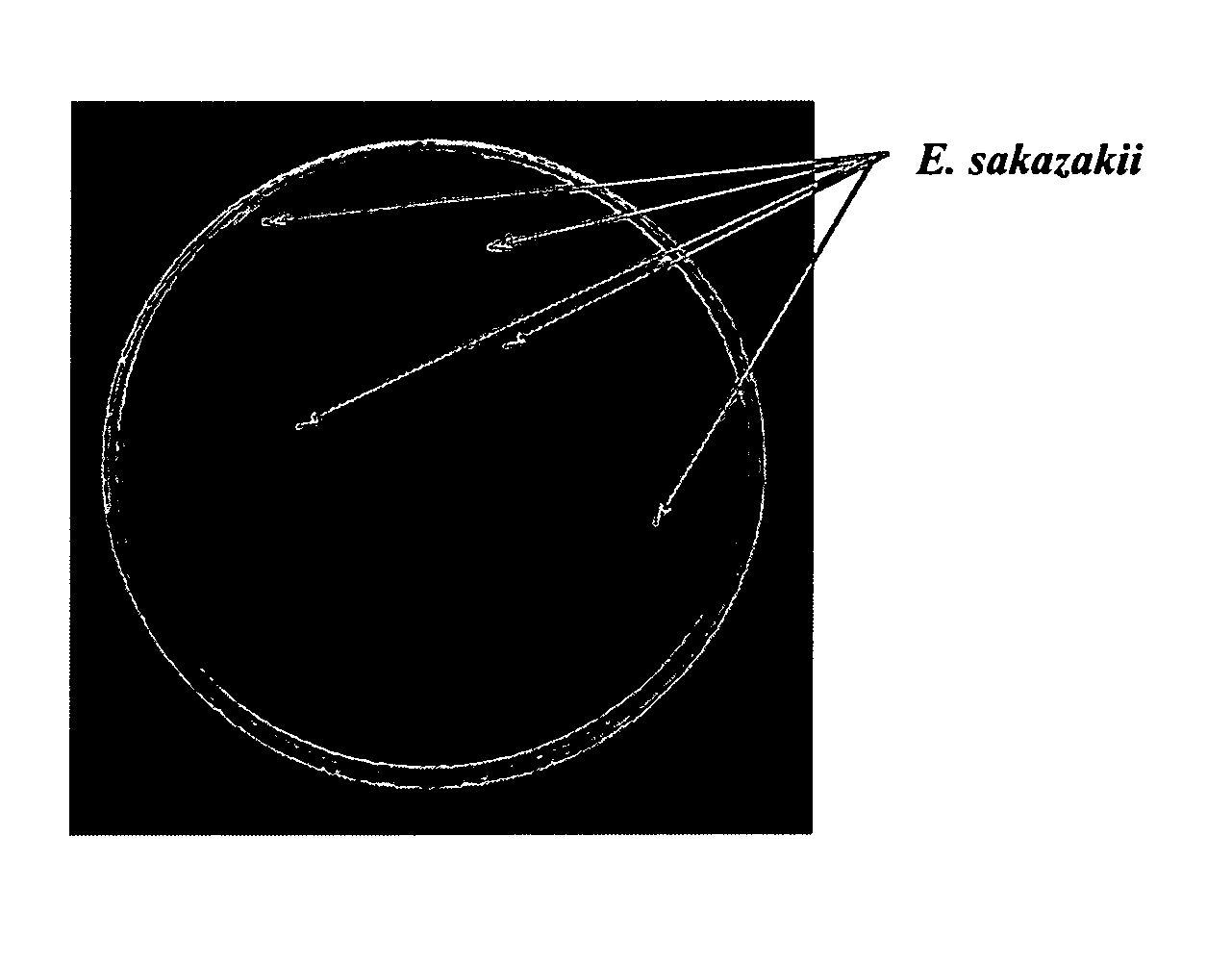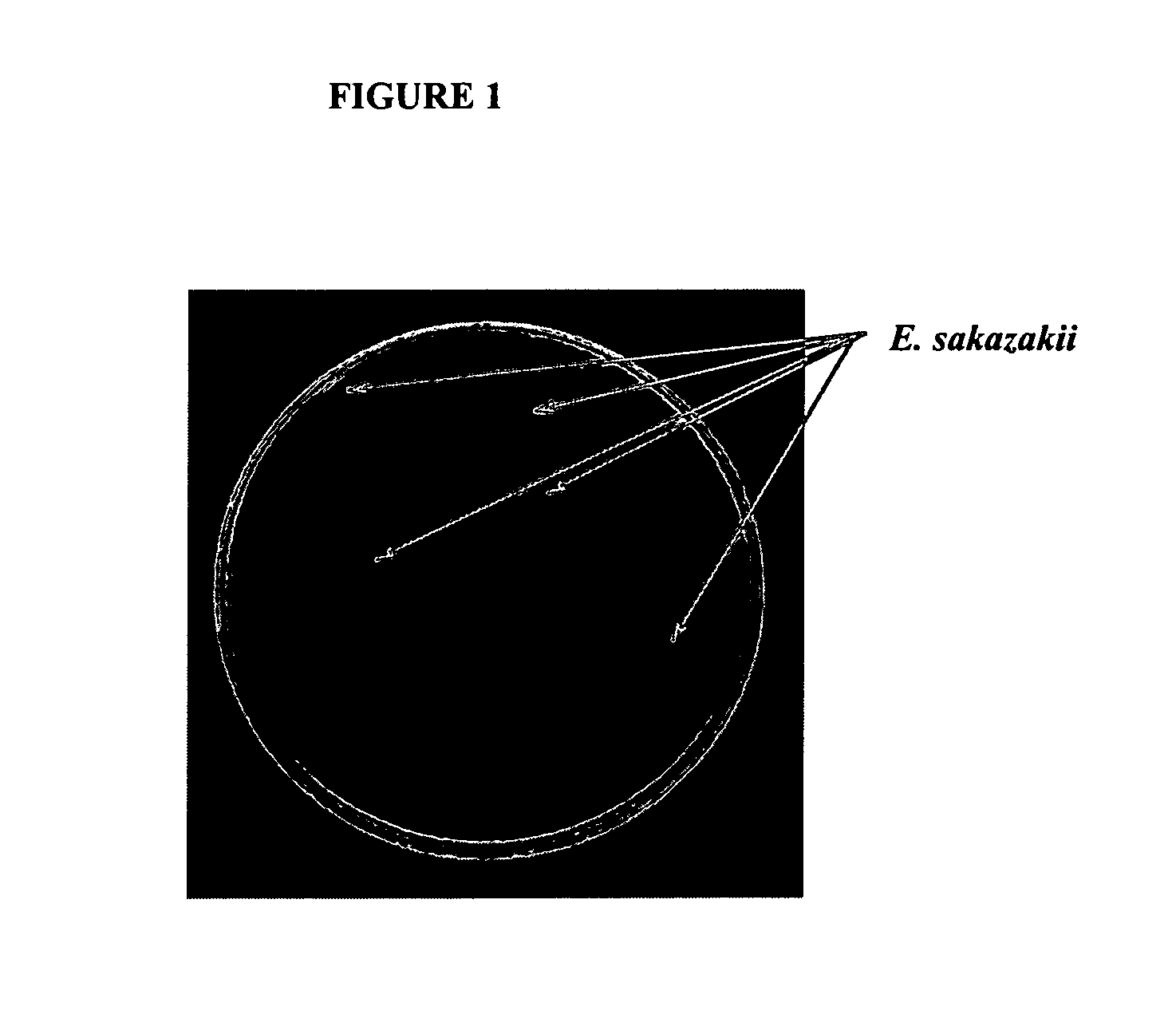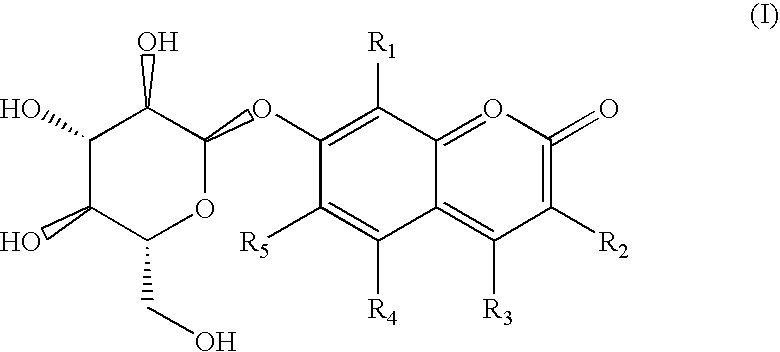Fluorogenic selective and differential medium for isolation of Enterobacter sakazakii
a technology of differential medium and enterobacter sakazakii, which is applied in the field of new culture and plating media, can solve the problems of insufficient selectiveness to reliably identify and distinguish enterobacter sakazakii, affecting the quality of enterobacter sakazakii, and posing a hazard for powdered human milk fortifiers
- Summary
- Abstract
- Description
- Claims
- Application Information
AI Technical Summary
Benefits of technology
Problems solved by technology
Method used
Image
Examples
example 1
4-methylumbelliferyl-α-D-glucoside was Identified as an Exemplary Preferred α-glucosidase Substrate for Detection of E. sakazakii
[0028] Summary: This example describes a selective and differential medium for E. sakazakii using α-glucosidase activity. Three α-glucosidase substrates and three basal media were compared and optimized for detection specificity. 4-methylumbelliferyl-α-D-glucoside was identified as preferred α-glucosidase substrate, because of its surprisingly effective ability to produce distinct fluorogenic E. sakazakii colonies.
[0029] Methods: Bacterial strains used in this Example are listed in Table 1. All bacteria were initially cultured in Tryptic Soy Broth (TSB) and combined to construct culture cocktails. E. sakazakii (4 strains) culture mixed cocktail was used in the basal medium selection. The background culture mixed cocktail (16 strains excluding E. sakazakii) was used for basal medium selection and nitrogen source optimization. The total culture mixed cockt...
example 2
The Nitrogen Source was Optimized
[0036] Summary: To optimize the basal medium for isolation of only E. sakazakii, different nitrogen sources were tested to reduce background noise. Tryptone was determined to be the preferred nitrogen source.
[0037] Methods: A background culture mixed cocktail (excluding E. sakazakii) was plated onto medium containing different nitrogen sources (20 g / L) (Table 3).
[0038] Results: Proteose peptone III (72.66% background noise) produced the highest background noise, followed by Bacto peptone (56.35% background noise) and Proteose peptone I (11.60% background noise). Tryptone (0.68% background noise) yielded the lowest background noise, after that the Tryptone concentration was also optimized. The lowest level of Tryptone produced the highest background noise. As Tryptone concentration increased, background noise decreased. Tryptone concentrations of 40 g / L (0.37%) and 20 g / L (0.62%) produced low levels of background noise that were not statistically d...
example 3
Incubation Period and Growth Temperature were Optimized
[0040] Summary: The effect of incubation times (18, 24 and 48 h) and temperatures (30° C. and 37° C.) on the microorganisms was evaluated (Table 4). Preferably, a 24 h incubation at 37° C. was determined as optimal growth conditions for differentiation of E. sakazakii.
[0041] Results: At 30° C., the number of fluorescent colonies increased dramatically up to 48 h but the total number of colonies did not. But at 37° C., a restricted increase in fluorescent colonies occurred, while total colonies increased with incubation time. Incubation for 24 h yielded the highest fluorescent to total colony ratio and further incubation (48 h) made it difficult to discriminate due to fluorescence diffusion. Villari et al. (J. Clin. Microbiol. 39:293-297) reported almost the same phenomena in an experiment with other fluorogenic substrate. More fluorescent colonies were observed after 37° C. incubation than after 30° C. Thus, 24 h incubation at...
PUM
 Login to View More
Login to View More Abstract
Description
Claims
Application Information
 Login to View More
Login to View More - R&D
- Intellectual Property
- Life Sciences
- Materials
- Tech Scout
- Unparalleled Data Quality
- Higher Quality Content
- 60% Fewer Hallucinations
Browse by: Latest US Patents, China's latest patents, Technical Efficacy Thesaurus, Application Domain, Technology Topic, Popular Technical Reports.
© 2025 PatSnap. All rights reserved.Legal|Privacy policy|Modern Slavery Act Transparency Statement|Sitemap|About US| Contact US: help@patsnap.com



